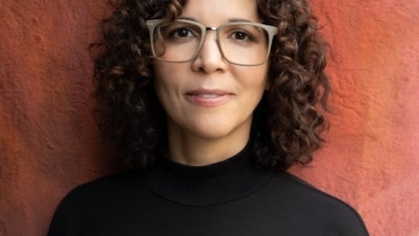In their book, "Consumer Equality, Race and the American Marketplace," Jerome D. Williams, a distinguished professor of marketing at Rutgers Business School and Rutgers University-Newark provost and executive vice chancellor, and his co-authors, Geraldine Rosa Henderson and Anne-Marie Hakstian, shed light on the issue of discrimination in the American marketplace.
More than ever, it seems, race and race relations are a topic of conversation and commentary across the U.S.
Police shootings of black men, a presidential campaign characterized by unfettered bigotry, and headlines about young shoppers of color being escorted from major department stores provide troubling evidence that prejudices endure.
Consumer Equality, Race and the American Marketplace, a new book by Jerome D. Williams, a distinguished professor of marketing at Rutgers Business School and Rutgers University-Newark provost and executive vice chancellor, and co-authors, Geraldine Rosa Henderson and Anne-Marie Hakstian, provides historical context for an understudied area: marketplace discrimination.
The authors bring new insights to the subject of discrimination with updated vocabulary that goes to the psychology of bias. They make a case for diversity in businesses and offer recommendations for what else can help curb, if not end, discrimination in the marketplace.
The following are excerpts from a conversation with Professor Williams:
The book makes it clear that retail profiling is a behavior that has existed for a very long time, some cases going back to the 1800s.
"In the last 20 years, there have been a number of cases of consumer racial profiling and other forms of marketplace discrimination that have received national attention, but as we mention in the book, you can go back to at least the late 1800s and find incidents of marketplace discrimination. For example, we begin the book with two cases that occurred in 1873.”
"The book is designed to increase awareness and also to help people understand that sometimes we focus on the big issues of police interaction in the community particularly as it involves race. Those are big cases that get national headlines, but we wanted to make the point that in everyday situations – for example, people going to the store and shopping – occurrences of discrimination also are very, very common. In a sense, from a psychological standpoint, such occurrences can have as much, or more of a negative impact on victims of this discriminatory treatment. We refer to these as micro aggressions; they build up over time and as a result of this constant barrage of negative marketplace experiences, there can be drastic effects on consumers of color, both psychologically and physically. Because these occurrences have not been written about to the extent we cover in our book, we believe that when readers see all of them collected together, it will elevate concern for the impact of marketplace discrimination to a level of public consciousness that I don’t think we’ve seen before."
Can you talk about the vocabulary that has developed around discrimination?
"If you look at marketplace discrimination by category, we identify cases which we refer to as "overt" cases, which might involve racial epithets where it is clear that race is the motive for the differential treatment. However, we also identify cases which we refer to as "subtle" or cases where there may be a level of ambiguity regarding the impetus behind the differential treatment of a consumer of color compared to a white consumer. A victim of consumer racial profiling might wonder if the reason for his being stopped for suspicion of shoplifting is because of his race or because of an overzealous retail security guard, especially when there is no outright identification of race as the motive for the stop. We also classify cases of differential treatment as "degradation" in the level of goods or services offered versus outright "denial" of goods or services. A final dimension of classification we use is whether or not there is criminal suspicion involved. While there are many dimensions to the vocabulary we use to classify marketplace discrimination, the bottom line is that when you’re the victim, it all hurts the same. That’s one of the key points we try to shine light on in our book."
How much of the marketplace discrimination you discuss in the book is real versus perceived?
"What we’ve found in our studies over the years is that if you’re a person of color and you belong to a group that historically has been mistreated in the marketplace, then you probably tend to overestimate the amount of marketplace discrimination occurring attributed to race. On the other hand, if you’re not a member of one of these groups, you probably tend to underestimate it and downplay concern over the severity of the problem, often accusing the victims of “playing the race card.” The real number most likely is somewhere between these end points on a spectrum of attitudes about the prevalence of marketplace discrimination. In our own surveys of consumer attitudes, we observe a huge divergence in perceptions about how much race matters in the marketplace in terms of how consumers are treated. Of course, survey data measures attitudes and attitudes reflect perceptions, which are highly subjective. In our book, what we’ve tried to do is say, "Let’s put aside the subjective evidence for a moment. Let’s also focus on the hard evidence and put that on the table," and then let consumers, researchers, the media, public policy makers look at the evidence and make their own judgements. Our book produces an abundance of hard evidence through court cases, media reports, personal experiences and statistics, including Federal Bureau of Investigation Uniform Crime Report data."
Ultimately, what do you want readers to take away from your book?
"It’s my feeling that readers who examine the preponderance of evidence I just mentioned will reach the same conclusion that I and my co-authors have reached, that marketplace discrimination is a real and significant problem in the American marketplace and needs to be addressed. While we are quite aware of the concerns for equality and the advances that have been made in other areas of society, in education, housing, employment, our book shines light on the need for equality in the marketplace – consumer equality.”


